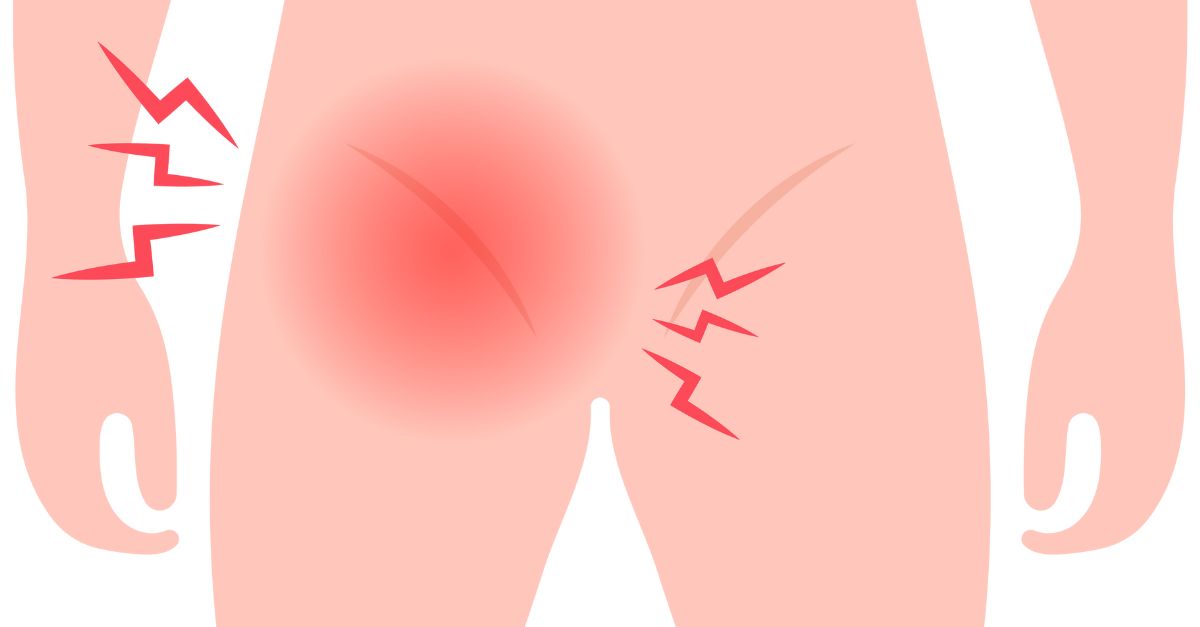Hey there, fitness enthusiasts! Ever hit the gym for a solid squat session only to find yourself wincing with groin or hip pain afterward? Don’t worry; you’re not alone.
In this blog, we’re diving into the nitty-gritty of why that post-squat discomfort happens, when it’s no big deal, and when it’s time to pay attention.
So, grab a seat, and let’s get to the bottom of this common workout woe!.
Understanding whether the groin/hip pain after squatting is bad or not.
Yes, experiencing groin or hip pain after squatting can be a cause for concern, but the severity and implications can vary depending on several factors.
It’s important not to lose specificity or context when discussing this issue.
Here is why:
Normal Muscle Soreness: Some level of muscle soreness or discomfort is normal after performing squats, especially if you’re new to the exercise or have recently increased the intensity of your workouts.
This type of pain is typically referred to as Delayed Onset Muscle Soreness (DOMS) and is a sign that your muscles are adapting to the new stress.
Improper Form: Groin or hip pain after squatting can often be attributed to poor squatting form.
If you’re not using proper technique, you may be placing excessive stress on your hip joints or groin muscles. This can lead to pain and, if not addressed, potentially result in injuries over time.
Overtraining or Overuse: Overtraining or performing squats too frequently without allowing sufficient rest and recovery time can also lead to hip or groin pain.
Muscles need time to recover, and overdoing it can strain these areas.
Injury: In some cases, hip or groin pain after squatting can be a sign of an injury. This could include issues like a hip flexor strain, a labral tear in the hip joint, or even a hernia.
These injuries typically require medical evaluation and treatment.
Mobility and Flexibility Issues: Poor hip mobility or flexibility can contribute to discomfort during and after squats. Inadequate warm-up or stretching can exacerbate these problems.
Pre-existing Conditions: Some individuals may have pre-existing conditions such as arthritis, bursitis, or structural abnormalities in the hip joint that make them more prone to experiencing hip or groin pain during or after squats.

To address hip or groin pain after squatting, consider the following steps:
- Check Your Form: Ensure that your squatting technique is correct. Consult with a fitness professional or coach if needed.
- Rest and Recovery: Give your muscles time to recover between squatting sessions.
- Warm-Up and Stretch: Prior to squatting, warm up adequately and perform hip mobility and flexibility exercises.
- Reduce Intensity: If the pain persists, consider lowering the weight or intensity of your squats temporarily.
- Seek Medical Advice: If the pain is severe, persistent, or accompanied by other symptoms, consult a healthcare professional for a thorough evaluation and diagnosis.
In other words, while some degree of muscle soreness is common after squats, experiencing groin or hip pain should not be ignored.
It’s essential to determine the cause of the pain and take appropriate steps to address it, whether through improved technique, rest, or medical consultation when necessary.
Further Explanations.
Let’s dive deeper and elaborate further on all the points mentioned.
Firstly let’s delve further into the first two primary reasons for experiencing groin or hip pain after squatting: normal muscle soreness (Delayed Onset Muscle Soreness or DOMS) and improper form.
1. Normal Muscle Soreness (DOMS):
Delayed Onset Muscle Soreness (DOMS) is a common and expected phenomenon, especially when you start a new exercise routine or increase the intensity of your workouts, such as incorporating squats. Here’s a more detailed explanation:
Cause: DOMS occurs due to microscopic damage and inflammation in muscle fibers. When you perform an exercise like squats, you’re placing stress on the muscles involved, primarily the quadriceps, hamstrings, glutes, and lower back. This stress can lead to tiny tears in muscle fibers, triggering an inflammatory response.
Timing: DOMS typically peaks 24 to 72 hours after exercise, which is why it’s called “delayed onset.” You might not feel much soreness immediately after your squat session, but it can become more noticeable over the following days.
Characteristics: DOMS is often described as a deep, dull, aching pain in the affected muscles. It’s usually symmetrical, meaning you’ll feel it in both legs if you did squats with proper form.
Adaptation: Importantly, DOMS is a sign that your muscles are adapting to the new stress. As your body repairs and rebuilds the damaged muscle fibers, they become stronger and more resilient. Over time, you’ll experience less soreness as your muscles adapt to the exercise.
2. Improper Form:
Improper squatting form can contribute to groin or hip pain and may even lead to injuries if not corrected. Here’s why it matters:
Excessive Stress: When you squat with improper form, you can place excessive stress on specific areas, including the hip joints and groin muscles. For example:
Knees Forward: Allowing your knees to move too far forward beyond your toes can strain your hip joints.
Lack of Hip Mobility: If you don’t have proper hip mobility, it can lead to compensatory movements that strain the groin area.
Forward Leaning: Leaning too far forward or rounding your back can stress the lower back and hips.
Muscle Imbalances: Improper form can also lead to muscle imbalances. Some muscles might become overactive and tight, while others become weak. This imbalance can further exacerbate pain and discomfort.
Risk of Injury: Over time, consistently using improper form can increase the risk of more severe injuries, such as hip impingement, labral tears, or hernias.
To prevent and address improper form issues:
Educate Yourself: Learn the correct squatting technique. There are various types of squats (e.g., back squats, front squats, goblet squats), so make sure you understand the specific form for the type you’re doing.
Get Feedback: Consider working with a certified fitness trainer or coach who can provide guidance and corrections to your form.
Start with Proper Mobility: Focus on improving hip mobility and flexibility through targeted exercises and warm-ups.
Gradual Progression: Don’t rush into heavy weights or high-intensity squats. Start with manageable loads and progress gradually to allow your body to adapt.
By paying attention to these factors and addressing any issues with form, you can reduce the risk of groin or hip pain after squats and promote safe and effective strength training.
let’s explore the concepts of overtraining or overuse and injuries related to hip or groin pain after squatting in more detail:
3. Overtraining or Overuse:
Overtraining or overuse injuries occur when you engage in excessive exercise without allowing your muscles and body to recover adequately. In the context of squatting, overtraining can lead to hip or groin pain due to several reasons:
Inadequate Recovery: When you perform squats frequently without giving your muscles sufficient time to recover, they can become fatigued and strained. The repetitive stress on the hip and groin muscles can lead to microtrauma, inflammation, and pain.
Muscle Imbalances: Overtraining can also result in muscle imbalances, where certain muscles become overworked while others become underused. This imbalance can lead to improper movement patterns during squats, increasing the risk of pain and injury.
Decreased Performance: Overtraining can cause a decrease in performance rather than improvement. You may notice a decrease in the amount of weight you can lift or a decline in squatting technique, both of which can contribute to hip or groin pain.
To address overtraining or overuse issues:
Rest and Recovery: Ensure that you incorporate rest days into your workout routine, especially after intense squat sessions. Rest allows your muscles to repair and adapt to the stress of exercise.
Listen to Your Body: Pay attention to signs of fatigue, persistent soreness, and decreased performance. These may indicate that you need more rest.
Periodization: Implement a well-structured training program that includes periods of higher and lower intensity to prevent overuse injuries. This can involve varying the types of squats, adjusting the volume and load, and incorporating deload weeks.
4. Injury:
Injuries related to hip or groin pain after squatting can be more serious and typically require medical evaluation and treatment. Here are some common types of injuries:
Hip Flexor Strain: This occurs when the muscles or tendons of the hip flexors (located at the front of the hip) become strained or torn. It can result from overstretching or overuse and can cause sharp pain in the front of the hip or groin area.
Labral Tear: The hip joint has a cartilaginous structure called the labrum that helps stabilize it. A labral tear can cause pain in the groin and hip area and may be the result of repetitive movements, trauma, or structural issues in the hip joint.
Hernia: Inguinal hernias are relatively common in the groin area. They occur when a portion of the intestine pushes through a weak spot in the abdominal wall. The strain from squatting can exacerbate the pain associated with a hernia.
To address injuries:
Seek Medical Evaluation: If you suspect a hip or groin injury, it’s crucial to consult a healthcare professional, such as an orthopedic specialist. They can diagnose the specific issue through imaging and recommend an appropriate treatment plan, which may include physical therapy, rest, or surgery in severe cases.
Rehabilitation: If you’re diagnosed with an injury, follow the prescribed rehabilitation program and give your body the time it needs to heal properly.
In other words, overtraining or overuse can lead to hip or groin pain due to excessive stress on muscles and insufficient recovery.
In contrast, injuries related to squatting can include strains, tears, or hernias and require medical attention for proper diagnosis and treatment.
To avoid these issues, maintain a balanced workout routine, incorporate rest, and prioritize good squatting form.
let’s further explore the topics of mobility and flexibility issues, as well as pre-existing conditions, and how they can contribute to hip or groin pain after squatting:
5. Mobility and Flexibility Issues:
Poor hip mobility and flexibility can significantly affect your ability to perform squats correctly and comfortably. Here’s how:
Limited Range of Motion: If your hip joints lack the necessary range of motion, it can lead to compensatory movements during squats, such as excessive forward lean or knees caving in. These compensations can place stress on the groin and hip area, leading to pain.

Tight Muscles: Tight hip flexors, hamstrings, or lower back muscles can restrict your ability to move through the squatting motion smoothly. This can lead to discomfort or pain, particularly in the hip and groin regions.
Inadequate Warm-Up and Stretching: Failing to properly warm up or stretch before squats can exacerbate mobility and flexibility issues. A warm-up helps increase blood flow to muscles, while stretching helps improve flexibility. Without these preparations, you may be more prone to injuries and discomfort.
To address mobility and flexibility issues:
Dynamic Warm-Up: Prior to squatting, perform a dynamic warm-up that includes movements like leg swings, hip circles, and bodyweight squats to increase blood flow and loosen up your muscles.
Stretching Routine: Incorporate regular stretching exercises that target the hip flexors, hamstrings, and lower back. This can improve your overall flexibility and help with squatting comfort.
Foam Rolling: Foam rolling can help release tension in tight muscles, which can be particularly beneficial for individuals with mobility issues.
6. Pre-existing Conditions:
Some individuals may have pre-existing hip conditions or structural abnormalities that predispose them to hip or groin pain during or after squats. Here are some examples:
Arthritis: Hip arthritis, such as osteoarthritis or rheumatoid arthritis, can cause inflammation and pain in the hip joint. Squatting can exacerbate this discomfort, especially if the joint is already compromised.
Bursitis: Hip bursitis involves inflammation of the bursa sacs in the hip joint. Squatting can irritate these inflamed bursa sacs, leading to sharp pain in the hip or groin.
Structural Abnormalities: Some individuals may have anatomical variations in their hip joint, such as impingements or dysplasia, which can make squatting uncomfortable or even damaging to the joint.
To address pre-existing conditions:
Consult a Healthcare Professional: If you have a known hip condition or suspect you might, it’s essential to consult a healthcare provider or orthopedic specialist. They can provide a proper diagnosis, recommend treatment options, and offer guidance on whether or how to modify your squatting routine.
Adapt Squatting Technique: In some cases, modifying your squatting technique, such as adjusting the depth or angle, can help reduce pain and discomfort associated with pre-existing conditions.
Alternative Exercises: If squatting aggravates your condition, your healthcare provider may suggest alternative lower-body exercises that are gentler on the hip joint.
In summary, poor hip mobility and flexibility can affect your squatting form and lead to discomfort, while pre-existing hip conditions or structural abnormalities can make you more susceptible to hip or groin pain during squats.
Addressing these issues through proper warm-up, stretching, and consulting healthcare professionals when necessary can help mitigate discomfort and reduce the risk of injury.
A tabular on this topic here.
Here’s a tabular overview of groin/hip pain after squatting, highlighting when it might be considered “bad” and when it could be a normal part of the exercise process. This table provides a quick reference guide:
| Scenario | Is it Bad? | Explanation |
|---|---|---|
| Normal Muscle Soreness (DOMS) | Usually Not Bad | DOMS is a normal part of muscle adaptation to exercise. It indicates your muscles are getting stronger. |
| Improper Form | Potentially Bad | Poor squatting form can lead to pain and potential injuries. Correcting form is essential for safety. |
| Overtraining or Overuse | Potentially Bad | Overtraining can strain muscles and lead to chronic pain or injury. Adequate rest and recovery are crucial. |
| Injury | Typically Bad | Injuries such as strains, tears, or hernias require medical attention. Ignoring them can lead to more severe issues. |
| Mobility and Flexibility Issues | Potentially Bad, Often Avoidable | Poor mobility can lead to discomfort, but it can be addressed through warm-up, stretching, and mobility exercises. |
| Pre-existing Conditions | Potentially Bad | Hip conditions or structural abnormalities may require modifications to your exercise routine and medical guidance. |
In summary, while groin/hip pain after squatting may not always be “bad,” it’s essential to consider the underlying cause. Normal muscle soreness and mobility issues can often be managed with proper warm-up and technique. However, improper form, overtraining, injuries, and pre-existing conditions should be taken seriously and addressed accordingly to prevent further harm.
Conclusion.
In conclusion, experiencing groin/hip pain after squatting is not always inherently bad, as it can result from normal muscle soreness or mobility limitations.
However, it can be a cause for concern when attributed to factors like improper form, overtraining, injuries, or pre-existing conditions.
Proper warm-up, technique, and medical attention when necessary are essential to address and mitigate potential issues associated with squat-related pain.

Hey there, it’s Mike Rrsq, the Editor-in-Chief over at Jsquat.com, and I’m absolutely obsessed with all things squat fitness! I’ve been lucky enough to get some serious recognition for my work in this field. With a solid background in the fitness and wellness industry, I’ve been there right from the get-go, helping shape this website into what it is today.
You see, I’m not just the boss around here; I’m also a passionate contributor. I love sharing my insights through my articles, and trust me, they’re not your run-of-the-mill stuff. Each piece I write is a labor of love, filled with my expertise and real-world experience in the fitness universe. So, if you’re into fitness and looking for some inspiration, you’re in the right place!

